Mosquitoes are a dreadful nuisance to mankind. Not only do they bite people, they are vectors for some terrible diseases, such as malaria and yellow fever.
As such, mosquito control has become an important aspect of disease prevention; especially where mosquito-borne illnesses are endemic.
Mosquitoes are not without natural controls, which sometimes can be exploited by man to help reduce mosquito populations. Some of the natural enemies of mosquitoes are discussed below.
Western Mosquitofish
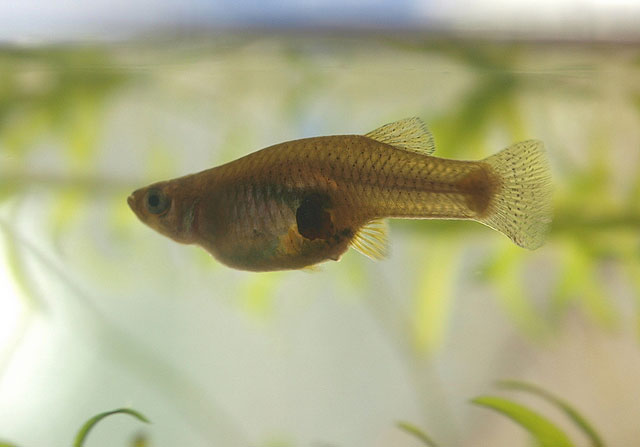
The western mosquitofish, Gambusia affinis, is a small fish whose native range mostly exists in the south-central United States.
The eastern extent of its natural range is the Apalachicola-Chattahoochee-Flint River system of the states of Alabama, Georgia, and Florida, with the western extent being the Rio Grande River all the way into New Mexico.
All of the major rivers which are tributaries of the Mississippi River are in within this fish’s natural range.
Western mosquitofish feed primarily on zooplankton and invertebrate prey (including mosquito larvae) at the top of the water column. The fish is well known for its high feeding capacity, which can reach 42–167% of its body weight per day.
Because of their reputation as mosquito-control agents, western mosquitofish have been introduced in temperate and tropical areas throughout around the world. In the U.S. during the early 1900s, mosquitofish were introduced to Hawaii from Texas to test their effectiveness in preying on mosquito larvae and their ability to function as an effective mosquito predator.
In the following decades, mosquitofish were widely introduced by public health such organizations, largely because they were thought to be an effective and inexpensive means of combating malaria.
In more recent years, many state and local health departments apparently view the use of mosquitofish to control mosquito larvae as a more attractive alternative to using pesticides.
Although widely introduced as mosquito control agents, more recent scientific reviews have not supported views that mosquitofish are effective in reducing mosquito populations or mosquito-borne diseases.
In some habitats, introduced mosquitofish reportedly displaced native fish species regarded as better or more efficient at controlling mosquitos. They also were destructive to predatory invertebrate populations that fed upon mosquito larvae.
Introduced mosquitofish have been particularly destructive in the American West where they have contributed to the elimination or decline of populations of federally endangered and threatened species.
For instance, mosquitofish have preyed on populations of tadpoles of certain frogs and newts, thus reducing the adult populations of these species.
Image, OpenCage.info.
Bacillus thuringiensis
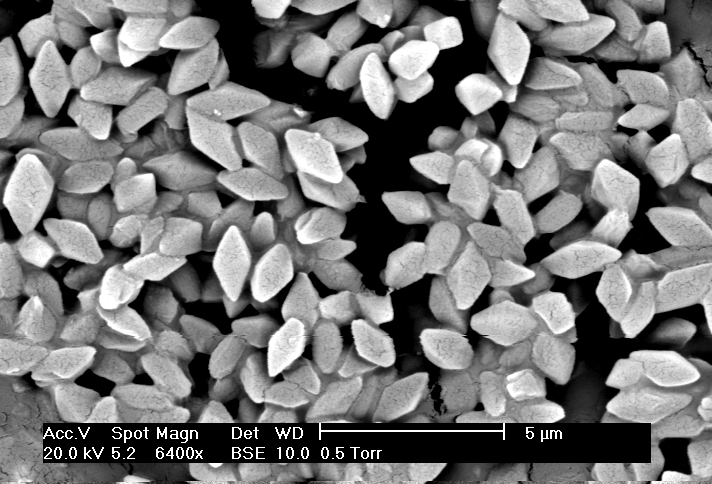
Bacillus thuringiensis (Bt) is a naturally occurring bacterium common in soils throughout the world. Several strains of this microbe can infect and kill insects.
Because of this property, Bt has been developed for insect control, and is the only “microbial insecticide” in widespread use today. The insecticidal activity of Bt was first discovered in 1911, and by the 1950s it was commercially available for use in pest-control.
Bt acts by producing proteins (delta-endotoxins) that react with the cells of the gut lining of susceptible insects. The proteins paralyze the digestive system, and the infected insect stops feeding—eventually dying of starvation. Even dead bacteria containing the proteins are effective insecticides.
The israelensis strain of the Bt microbe is used to control certain types of fly larvae, to include mosquitoes, black flies, and fungus gnats. To control mosquito larvae, formulations containing the israelensis strain are placed into the standing water where mosquitos breed.
For these applications, Bt usually is applied in granules or solid, slow-release rings or briquettes to increase persistence. Rates of application are determined by the size of the water body.
One of the advantages of BT is that it does not have a broad spectrum of activity, so the microbes do not kill beneficial insects, such as insect predators or pollinators.
Image, Wikipedia.
Biting Midge, Corethrella appendiculata
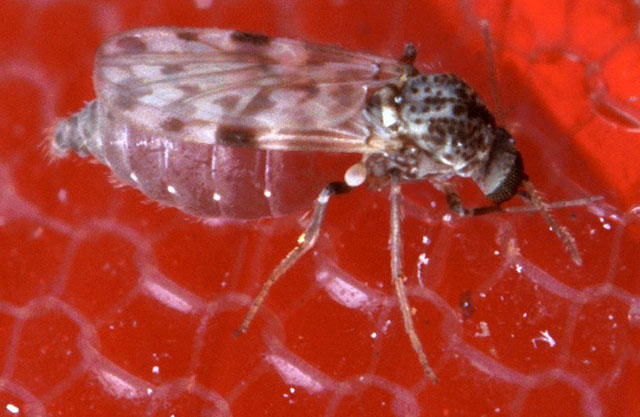
Corethrella appendiculata is a small biting midge that targets frogs as an adult. The larval stage is an aquatic form that is predatory and which targets mosquito larvae for food.
The midge larvae can be found in standing water in containers, tree holes; i.e., the same habitats where mosquito larvae can be found. The midge larvae are small, but they are voracious feeders.
Interest in C. appendiculata has grown in recent years due to the expanding invasion of the Asian tiger mosquito in the U.S. This invader is native to Southeast Asia and reached U.S. shores in the mid-1980s via a Texas port.
The Asian tiger mosquito is an epidemiologically important vector for the transmission of many pathogens, including the viruses that cause yellow fever, dengue fever, and Chikungunya fever. It also is a vector for several filarial nematode parasites.
Researchers have found that C. appendiculata larvae will choose to attack and eat tiger mosquito larvae over native mosquito larvae.
Size differences between the larvae of the mosquito species are a factor, with the tiger mosquito larvae being smaller than other mosquito larvae, and therefore easier to attack.
The native mosquito larvae also adopt less risky behaviors than the invasive mosquito larvae, making them less susceptible to being eaten.
Image, Wikipedia.
Dragonflies
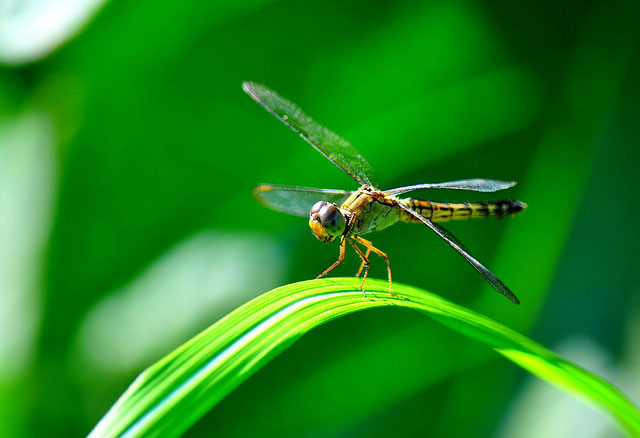
Dragonflies are fierce hunters of insects, and mosquitoes are definitely on the menu. Dragonflies spend most of their lives living under water as larvae (nymphs)—Up to five years.
They usually live just a few months as adult flies. As nymphs they hunt small aquatic insects and larvae, especially mosquito larvae. Some dragonfly nymphs will even eat tadpoles and guppies.
The nymphs snag their prey with powerful jaws using the same tenacity and determination that adult flies use.
Adult dragonflies are also voracious eaters. They eat other flying insects, in particular smaller flies and mosquitoes. One Harvard study observed a dragonfly that ate 30 house flies in rapid succession, and would have continued eating if more prey was available.
The compound eyes of the dragonfly are even more developed than the compound eyes of the house fly, and are put to good use during hunts for prey. The dragonfly does not chase its prey through the air.
Rather, it sees them with its tremendous visual acuity and then calculates an intercept path in order to meet them at a specific point. Once they intercept their prey, they grab the prey with their front legs, which curve around the prey like a cage, preventing escape. They then use powerful jaws to crush their prey.
The four wings of the dragonfly operate independently, which allows it to hover and fly with great maneuverability. The intricate compound eyes and great flying ability help make the dragonfly a fearsome insect predator. Dragonflies are beneficial insects that man should respect.
Image by whologwhy.
Other Mosquito Predators
As much as mosquitoes bite, they are also a part of the natural food chain. They are eaten by many other organisms, to include other insects, birds, reptiles, fish, and bats.
Bats are sometimes named as effective measures to get rid of mosquitoes in yards but this is a myth. Bats eat mostly larger insects and mosquitoes are only a few percent of their diet as research has shown.
The same goes for birds. Certain birds such as Purple Martins are claimed to feed on mosquitoes thus helping reduce their amount. Yet these birds eat only very few mosquitoes so their presence does not make much of a difference. What’s more is that Purple Martins also feed on the natural enemy of skeeters, dragonflies.
The toads and lizards living in your garden, the frogs in nearby ponds, and the birds inhabiting your neighborhood include mosquitoes in their diets, which helps to keep the mosquito population lower than it would be otherwise. Even if their contribution is small, they are part of the ecosystem.
Read here about the best mosquito repellent plants.
References
- Cranshaw, W.S. (2014, August 5). Bacillus thuringiensis. Retrieved from Colorado State University.
- *Nico, L., Fuller, P., Jacobs, G., Cannister, M., Larson, J,. Fusaro, A…Neilson, M. (2013, August 2). Gambusia affinis (Baird and Girard, 1853). Retrieved from UCGS.
- Science Daily. (2009, June 8). Midge Keeps Invasive Mosquito In Check, Aiding Native Mosquitoes. Retrieved from ScienceDaily.
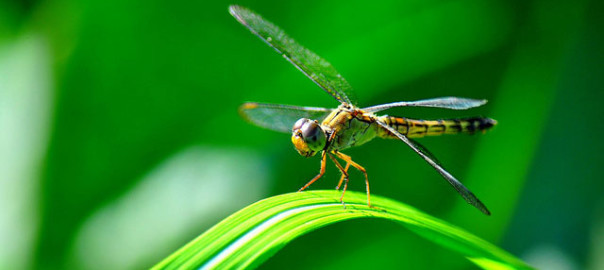
You quote ” Bats are sometimes named as effective measures to get rid of mosquitoes in yards but this is a myth”.
This is not a myth, I can take you to a property where no mosquitos exist next to a location of a bat colony……….immense predators……sun bath and swim at the pool side night and day no worries. Really pleasant I am a natural attraction for mosquitos and know I have to be careful.
It’sa pity you don’t have a donate button! I’d mopst certainly donate tto this excellent blog!
I suuppose for now i’ll settle for bookmarking and addinng your
RSS feed to my Google account. I look forward to brand new updates and will talk about this site wuth my Facebook group.
Chat soon!
Thank you for sharing. I truly enjoyed the learning experance.
I think people should look into using nature to try and fight the mosquitos maybe we could use dragonfly’s. Chemicals are not very safe and not always working with the disease that are on the rise we need to do something. You have a lot of knowledge you should try talking to some people in governments see if they might try some of your ideals. Introducing dragonfly’s or something . Sorry I’m not very articulate
Natural is the way to go pesticides are not, there are too many unintended consequences. You’d think we would have learned that by now. Keep up the good work with getting the message out there
Our neighborhood is trying to hold onto several hundred Muscovy ducks in order to control mosquitoes. Do Muscovy ducks eat enough mosquitoes to make any difference?
I’m inclined to think it depends on various other factors but the presence of a large Muscovy duck population could certainly help.
I have noticed that when horseflies are around the mosquitoes are gone??
Its all a balancing act between predator and prey. When prey reaches big enough numbers the predator does fine,but as the prey dwindles,sodo the predators(they starve for lackof food,not allthough) The mosquitos are still around and in numbers you will notice. As they increase in number,then the predator kick in and reduces them. You never eliminate the mosquito,just a reduction
Thank you…skeeters still biting me.. seems like plane ole staying indoors is my answer. BUMMER ..HOWEVER YOU HAVE GIVEN ME SOME HOPE & I can just take a new approuch. Was gonna get Bat House..but ya killed that. Sprayed lawn & maybe GROW SOME Garlic…truelly got sucked into your site too long & my butt hurts!.. THANX
Some people swear that a bat house helped keep mosquitoes down so if you’re desperate you might wanna give it a try. Personally, I’d grow a mix of plants as (theoretically) different skeeter species may be warded off by different plants. Hope you will be able to find some relief from those nasty buggers.
Perhaps the comment by barb brandt here will convince you to get a bat house anyway.
thanks for the help
What are some other animals that are enemies to stupid mosquito, we must reduce their population,